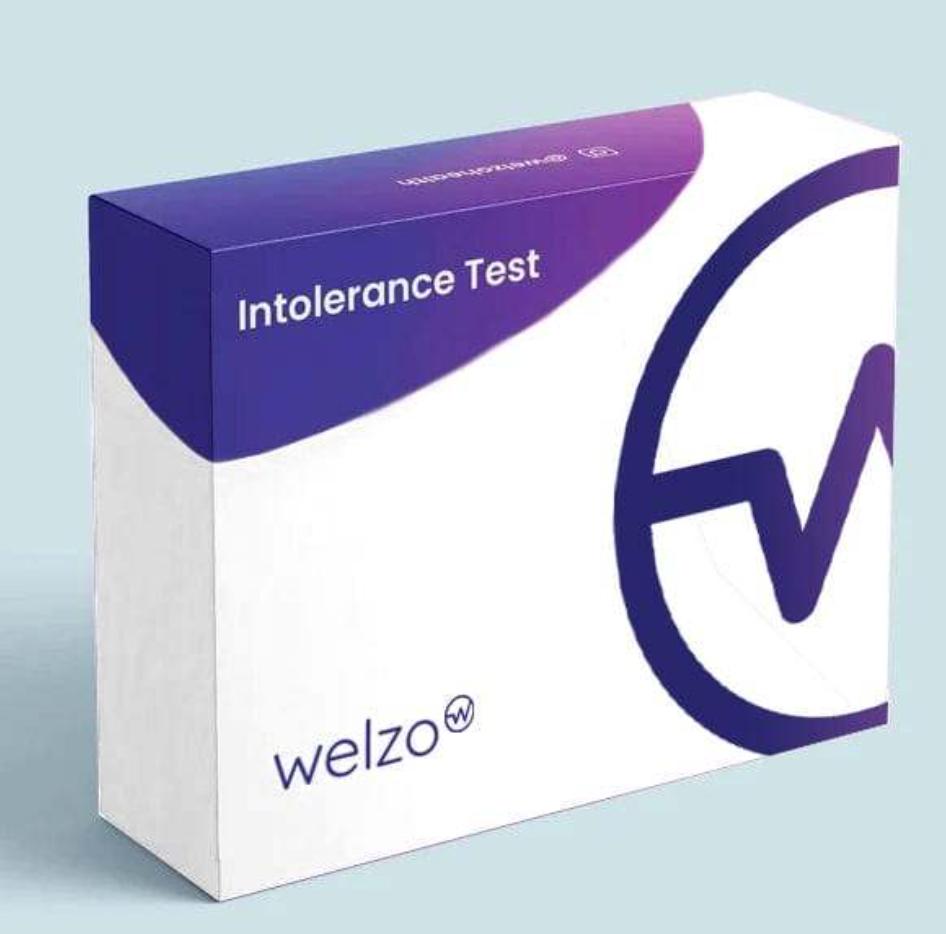Beef Allergy and Intolerance - Symptoms, Causes and Testing

Related products
Definition of Beef Allergy and Intolerance
Beef allergy is an immune system reaction to proteins found in beef, while beef intolerance is the difficulty digesting beef that does not involve the immune system. Both conditions can negatively impact an individual's quality of life, making it essential to understand their differences, causes, and management strategies1.
Prevalence and Importance of Beef Allergy and Intolerance
Beef allergy is relatively rare compared to other food allergies, but its prevalence has increased in recent years due to the growing awareness of alpha-gal syndrome1. On the other hand, beef intolerance is less well-documented, but it is believed to affect a small percentage of the population. Both conditions can have significant consequences for the affected individuals, making it crucial to recognize their symptoms and develop appropriate management strategies.
Purpose of the Article
This article aims to provide an in-depth understanding of the causes, symptoms, diagnosis, and management of beef allergy and intolerance. Additionally, it offers guidance on how to live with these conditions and emphasizes the importance of awareness and support for those affected.
To learn more about Allergies, read our comprehensive guide that covers: Allergies:, Types, Causes, Symptoms, Diagnosis, and Treatment options.
If you are looking for treatments for hay fever or general allergens, then visit our extensive page with allergy and hayfever medication and tablets.
Causes and Mechanisms of Beef Allergy and Intolerance
Beef Allergy
Immune System Response: Beef allergies occur when the immune system mistakenly identifies proteins in beef as harmful and mounts an attack against them. This immune response can lead to the release of histamine and other chemicals, causing allergy symptoms1.
Allergens in Beef: There are several proteins in beef that can trigger an allergic reaction, including bovine serum albumin, bovine gamma globulin, and bovine IgG1. Sensitization to these proteins can occur through ingestion, inhalation, or skin contact.
Alpha-Gal Allergy: Tick Bite-Induced Allergy to Mammalian Meat: Alpha-gal syndrome is a unique type of beef allergy caused by a carbohydrate molecule called galactose-alpha-1,3-galactose (alpha-gal) found in mammalian meat. It is often triggered by the bite of the Lone Star tick (Amblyomma americanum) and can result in delayed allergic reactions to beef, pork, and lamb2.
Beef Intolerance
Insufficient Enzymes to Break Down Proteins in Beef: Beef intolerance may occur when an individual lacks the necessary enzymes to break down proteins in beef, such as proteases and peptidases. This can result in difficulty digesting and absorbing nutrients from beef, leading to gastrointestinal symptoms1.
Gastrointestinal Factors: Other factors contributing to beef intolerance may include abnormal gut motility, increased intestinal permeability,
and altered gut microbiota1. These gastrointestinal factors can exacerbate the difficulties in digesting and absorbing beef proteins, leading to intolerance symptoms.Symptoms of Beef Allergy and Intolerance
Beef Allergy Symptoms
Mild Symptoms: Mild beef allergy symptoms may include itchy or watery eyes, runny or stuffy nose, skin rash, or hives1.
Moderate Symptoms: Moderate beef allergy symptoms can involve swelling of the face, lips, or tongue, as well as difficulty breathing1.
Severe Symptoms (Anaphylaxis): In rare cases, beef allergies can lead to a severe and life-threatening allergic reaction called anaphylaxis. Symptoms may include rapid pulse, drop in blood pressure, dizziness, or fainting1.
Beef Intolerance Symptoms
Gastrointestinal Symptoms: Beef intolerance symptoms primarily affect the digestive system and may include abdominal pain, bloating, gas, diarrhea, or nausea1.
Other Associated Symptoms: In addition to gastrointestinal symptoms, beef intolerance can also cause headaches, fatigue, and skin rashes in some individuals1.
Diagnosis of Beef Allergy and Intolerance
Medical History and Physical Examination
Diagnosing beef allergy or intolerance begins with a thorough medical history and physical examination. The healthcare provider will ask about the symptoms, their onset, and any potential triggers, as well as any family history of allergies or intolerances1.
Allergy Testing Methods
Skin Prick Test: A skin prick allergy test can help determine if an individual is allergic to beef. During this test, a small amount of beef extract is applied to the skin, and the skin is pricked to allow the extract to enter. If the individual is allergic to beef, a raised, red bump will appear within 15-20 minutes1.
Blood Test (IgE): A blood test measuring specific immunoglobulin E (IgE) antibodies to beef proteins can also be used to diagnose beef allergy1.
Differential Diagnosis
Other Food Allergies or Intolerances: It is essential to consider other food allergies or intolerances when diagnosing beef allergy or intolerance.
Management and Treatment of Beef Allergy and Intolerance
Avoidance of Beef-Containing Foods
Reading Food Labels: The most effective way to manage beef allergy or intolerance is to avoid consuming beef-containing foods. Reading food labels carefully and being aware of potential hidden sources of beef is essential1.
Dining Out and Cross-Contamination: When dining out, inform the restaurant staff about your beef allergy or intolerance to ensure they prepare your meal without beef or beef-derived ingredients. Be aware of potential cross-contamination risks in shared cooking surfaces and utensils1.
Medical Treatments
Antihistamines (for Beef Allergy): Antihistamines can help relieve mild to moderate beef allergy symptoms by blocking the action of histamine, a chemical released during an allergic reaction1.
Epinephrine Auto-Injector (for Anaphylaxis): Individuals with a history of severe allergic reactions to beef should carry an epinephrine auto-injector. This device delivers a dose of epinephrine to counteract the life-threatening symptoms of anaphylaxis1.
Lifestyle Modifications
Cooking Without Beef Ingredients: Learning to cook without beef and finding alternative sources of protein can help individuals with beef allergy or intolerance maintain a balanced and enjoyable diet1.
Beef Substitutes in Recipes: Experiment with beef substitutes, such as poultry, fish, or plant-based protein sources, to create satisfying meals without triggering allergy or intolerance symptoms1.
Living with Beef Allergy and Intolerance
Emotional Impact and Social Challenges
Living with beef allergy or intolerance can be emotionally challenging and may lead to feelings of isolation or frustration. Navigating social situations involving food, such as parties or family gatherings, can be particularly difficult1.
Support Networks and Resources
Allergist and Primary Care Physician: Establishing a strong relationship with an allergist and primary care physician can provide invaluable guidance and support in managing beef allergy or intolerance1.
Allergy Support Groups: Joining an allergy support group can help individuals connect with others facing similar challenges, share experiences, and learn practical strategies for living with beef allergy or intolerance1.
i>Online Forums and Communities: Online forums and communities dedicated to food allergies and intolerances can offer additional resources, advice, and support for those living with beef allergy or intolerance1.Educating Friends and Family About Beef Allergy and Intolerance
It is crucial to educate friends and family members about beef allergy and intolerance to ensure they understand the seriousness of the condition and can provide support. This can help create a safe and inclusive environment during social gatherings and shared meals1.
Conclusion
Importance of Awareness and Understanding of Beef Allergy and Intolerance
Raising awareness and understanding of beef allergy and intolerance is essential in helping those affected to manage their condition effectively. By recognizing the symptoms, causes, and appropriate management strategies, individuals can lead healthy and fulfilling lives despite their dietary restrictions1.
Encouragement for Those Living with Beef Allergy and Intolerance
While living with beef allergy or intolerance can be challenging, it is important to remember that many resources and support networks are available. By seeking guidance from healthcare professionals, connecting with others facing similar challenges, and making informed dietary choices, individuals can successfully navigate their condition and maintain a high quality of life1.
Related Allergy treatments
- Allergy and hayfever treatment
- Allergy and intolerance test
- Allergy testing
- Piriteze allergy tablets
- Buy Telfast Online
- Buy fexofenadine online
- Buy Cetirizine online
- Intolerance Blood Test
- Buy loratadine online
- Buy Levocetirizine online
- Buy Rapitil online
Related allergy articles
- Allergies: Definition, Types, Causes, Signs and Symptoms, Diagnosis, and Treatment
- Pollen counter
- Common allergens
- How to prevent allergies
- Pediatric allergies
- Pregnancy and allergies
- Allergic asthma
- Oral allergy syndrome
- Egg allergies
- Natural allergy remedies
- Tomato allergy
- Lactose Intolerance
- Corn intolerance
- Coconut allergy
- Banana allergy
- Kiwi allergy
- Casein intolerance
- Sulphite allergy
- McDonald's Menu Allergy
- Strawberry allergy
- Penicillin allergy
- Yeast allergy & Intolerance
- Caffeine intolerance
- Gluten intolerance
- Latex allergy
- Pet allergies
- Hay fever injections
- Allium allergies
- Oat intolerance
- Sugar allergy and intolerance
- Shellfish intolerance
- Wheat intolerance
- Pineapple allergy
- Water allergy
- Hair dye allergy
- Lupin allergy


























 Rated Excellent by 26,523+ Reviews
Rated Excellent by 26,523+ Reviews